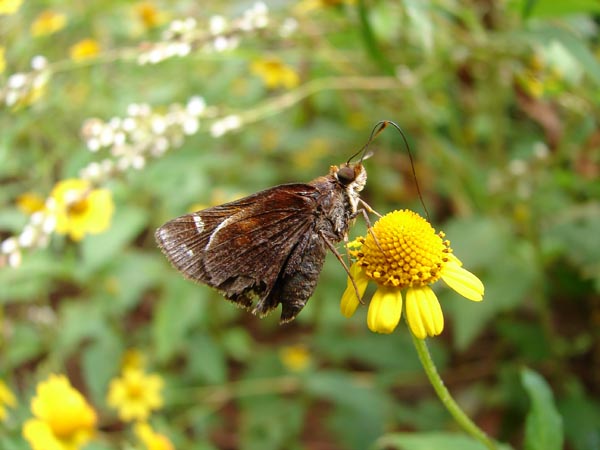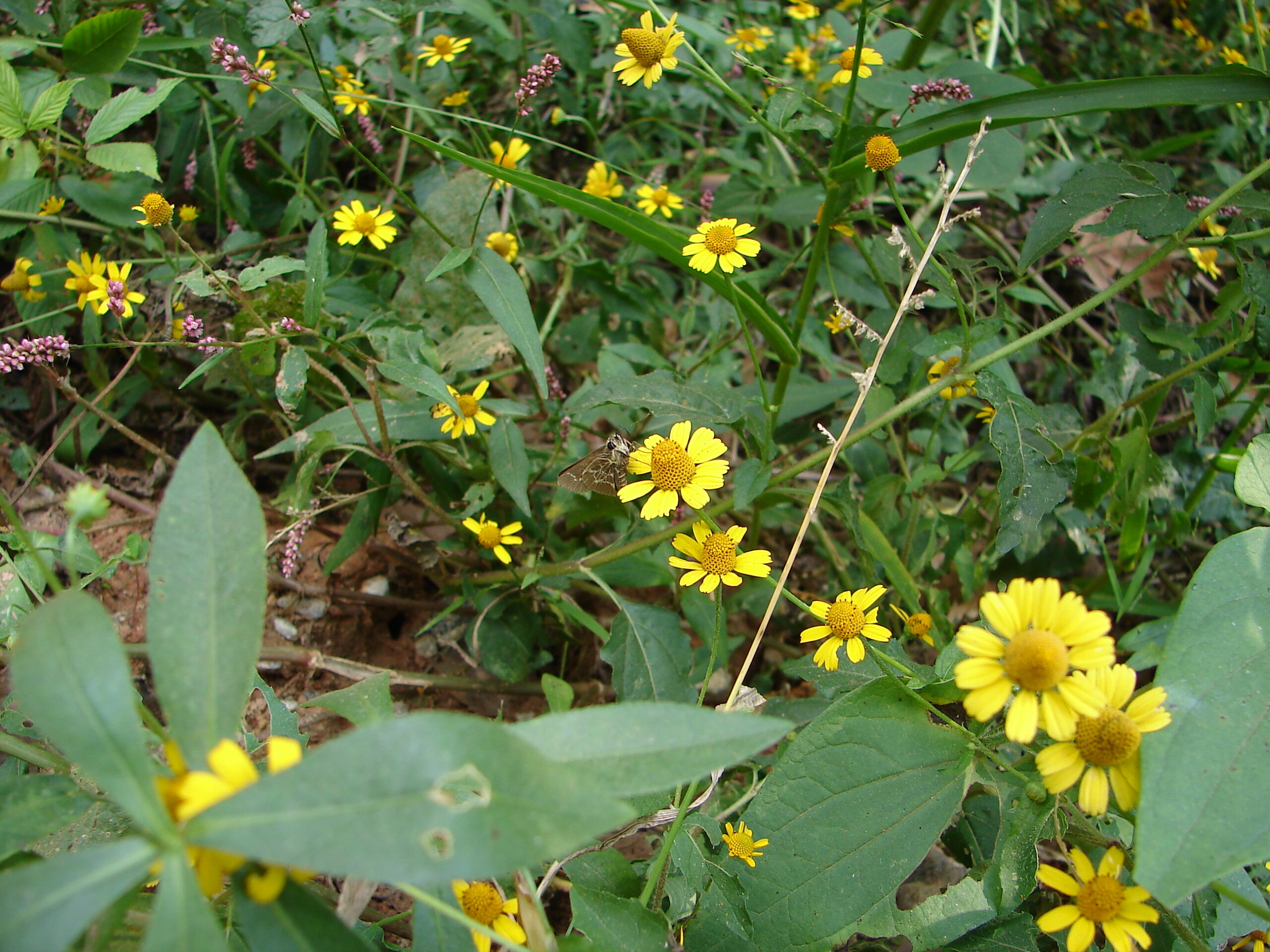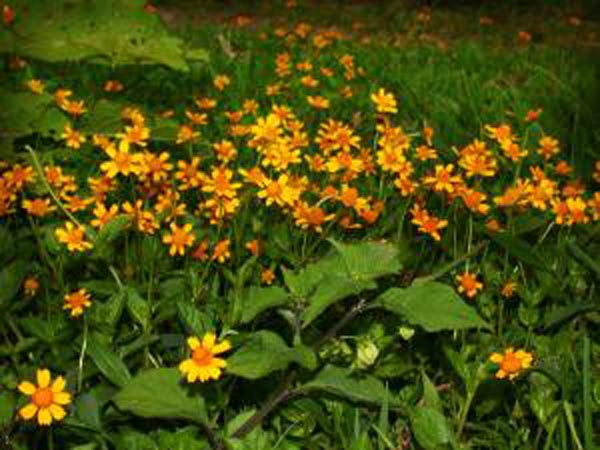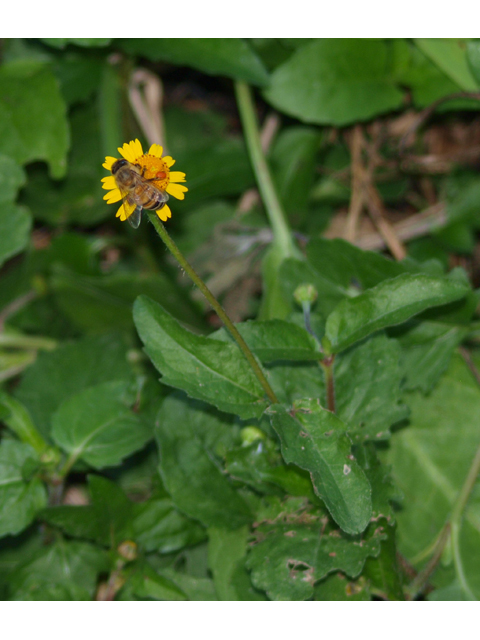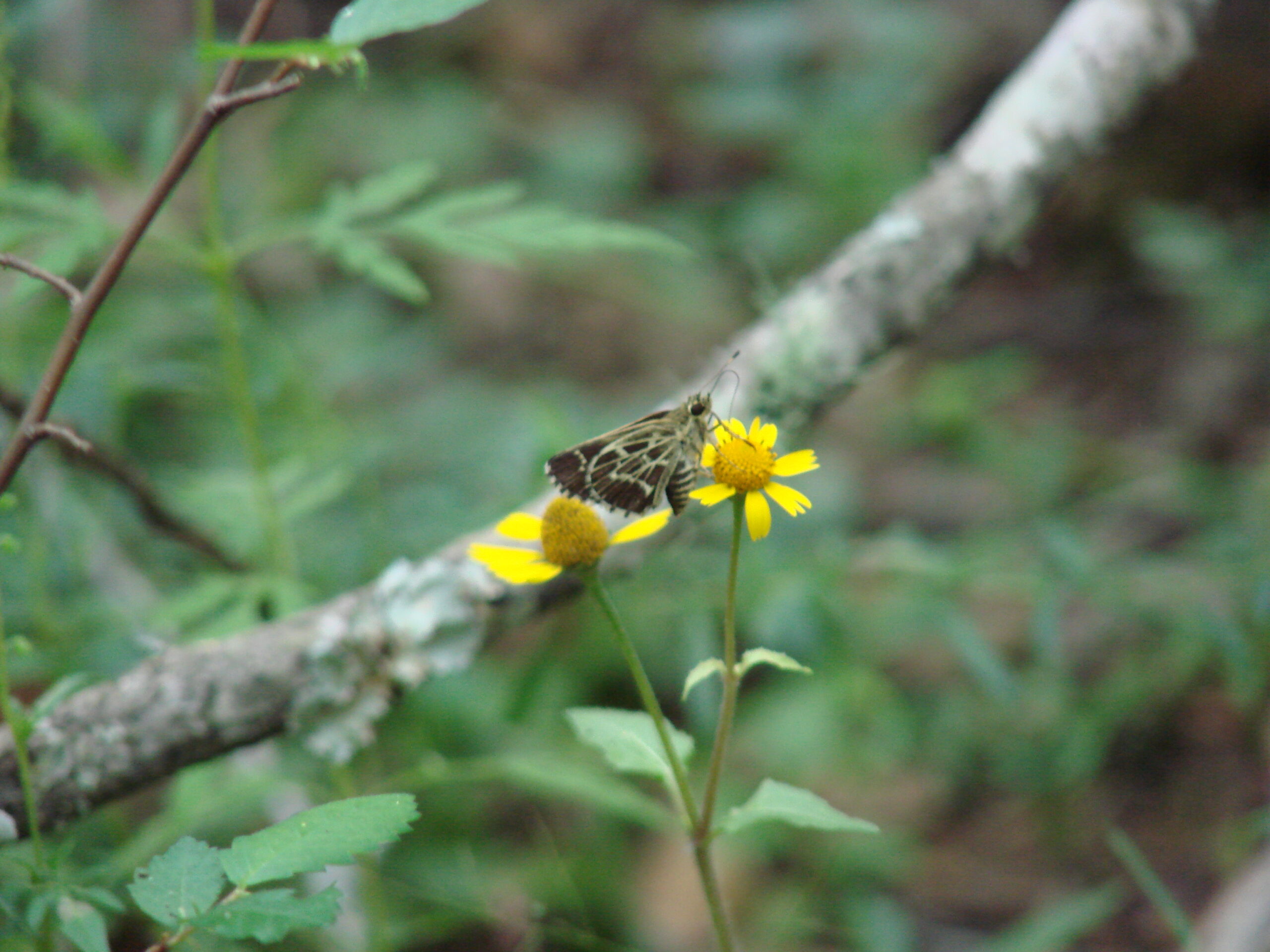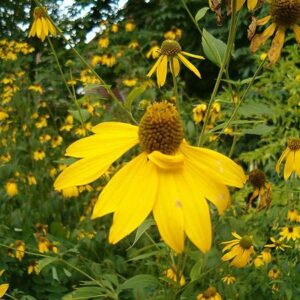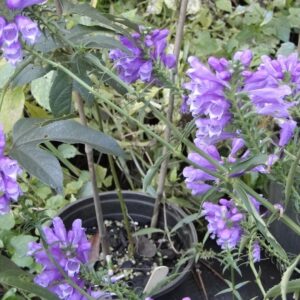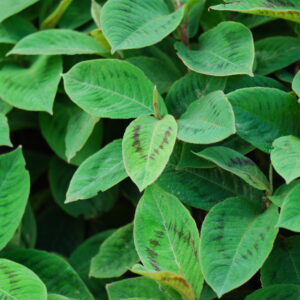Price range: $7.00 through $18.00
Description
Flying to a flower, sipping nectar, then to another, and another, and another all day long is exhausting. That’s why butterflies and bees love our native perennial Acmella (Creeping Spotflower). What most people think of as its “flower” is really row upon row of disc flowers (each producing nectar and pollen) surrounded by a row of showy ray flowers signalling “eat here” to all flying nearby. The flower in the picture has about 50 disc flowers per row. So, when pollinators land, they can drink from 50 places before walking (instead of flying) to the next head (which is normally no more than a few inches away) In Coastal SC., Acmella blooms prolifically from June until frost, Pollinators visit it day or day for months on end. Birds and small mammals feed on the seeds. I fell in love with Acmella (and started growing it in the nursery) after seeing it in the wild in the early 90’s. I have been growing it ever since. It makes a low (a few inches tall) groundcover when planted alone or among other low plants. Left to fend for itself among the weeds, it can climb through (a foot or two)and bloom on top of them. I It is easy to manage without tools. The stems are soft enough to pinch (to keep it shorter or bushier) and shallow enough to pull out with your fingers. It thrives in sun or shade in average to wet soil. The flexible stems which rise and fall with water levels, making them ideal for the rain garden or “holeless container garden.” It can survive infrequent saltwater inundation. It is not particular to pH thriving in both shell-sand and blackwater swamps. Deer normally ignore it. If browsing is excessive, interplant it with one of the “Deer Baffles” like Chasmanthium sessiliflorum, Arundinaria tecta,Salvia coccinea or Conoclinium coelestinum. We propagate our plants from native populations in Effingham Co., GA and Beaufort, Colleton and Hampton Cos. SC
Native to Southeastern US, Mexico, Central America and South America. It is edible and medicinal. It is closely related to Acmella oleracea (Paracress).
Additional information
| Weight | 0.3 kg |
|---|---|
| Dimensions | 3.5 × 3.5 × 6 in |
| Size | 3.5" Pot Dormant, 3.5" pot, 1 gallon |

